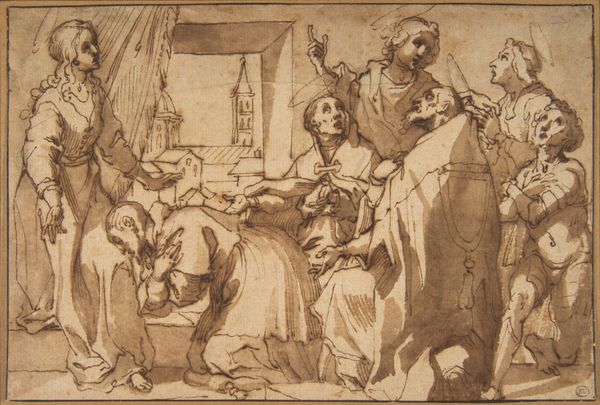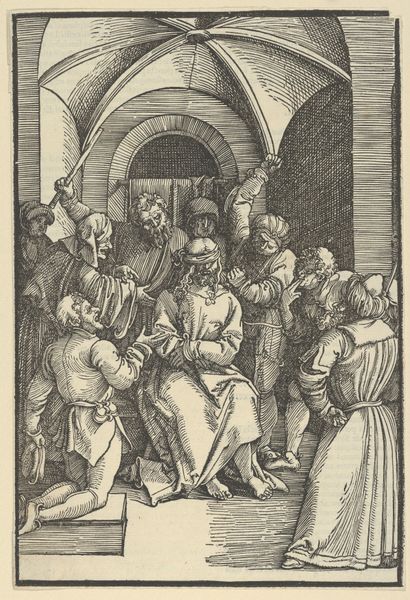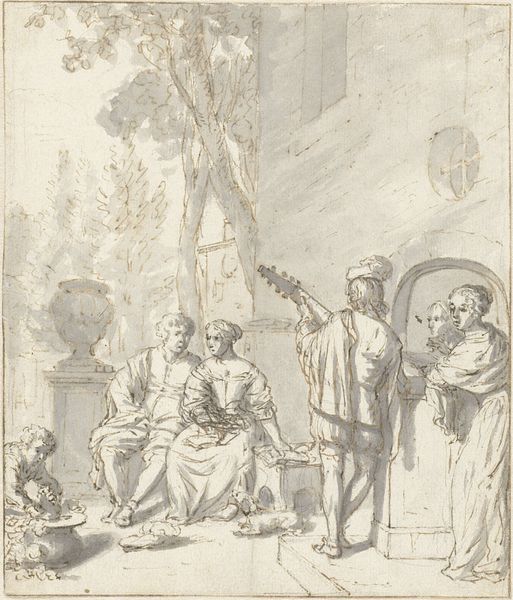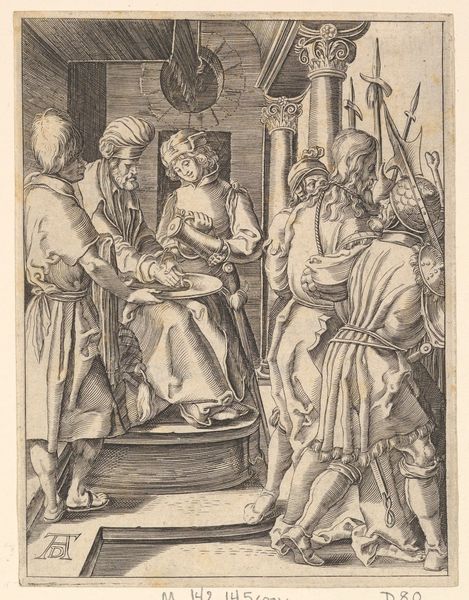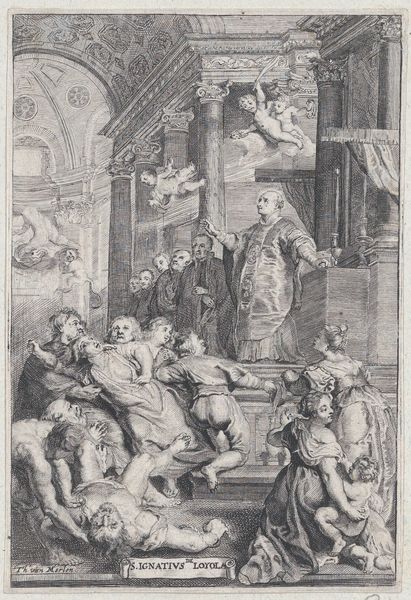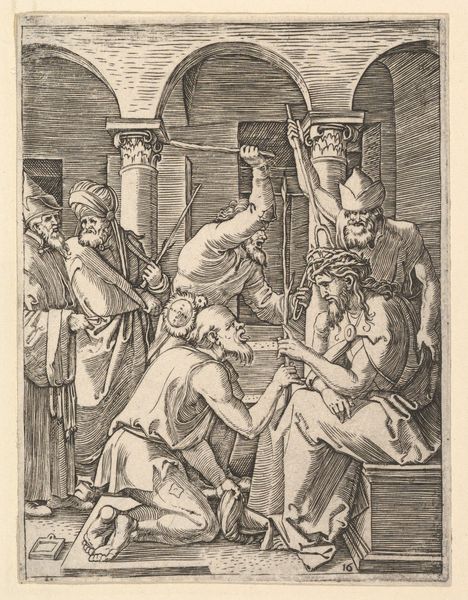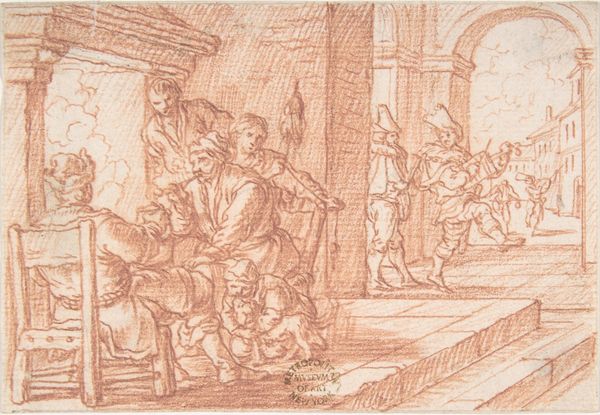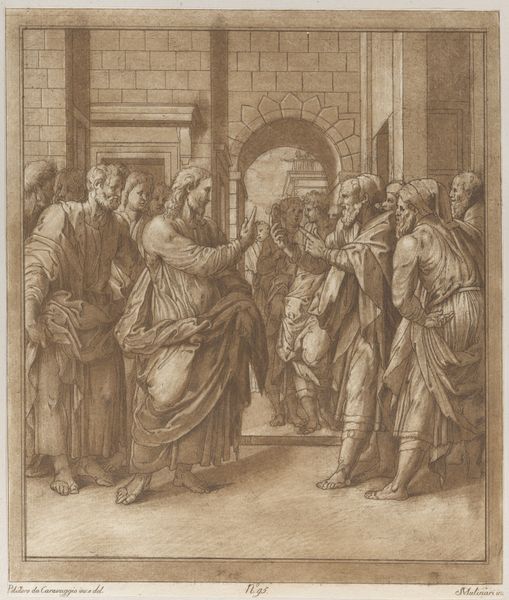
A scene from the life of St Nicholas of Tolentino 1591 - 1645
0:00
0:00
drawing, paper, ink
#
drawing
#
narrative-art
#
ink painting
#
mannerism
#
figuration
#
paper
#
ink
#
history-painting
Dimensions: 239 mm (height) x 180 mm (width) (bladmaal)
Curator: This delicate drawing, executed in ink on paper, offers us a glimpse into "A Scene from the Life of St. Nicholas of Tolentino." While the exact date is unspecified, we place its creation somewhere between 1591 and 1645. It is currently housed here at the SMK, Statens Museum for Kunst, and is attributed to Giovanni Battista Mercati. Editor: Immediately, the raw, sketch-like quality of the lines strikes me. There’s an energy, but also a formality suggested by the grid underlying the composition. The contrasts create tension. Curator: The grid indeed points to the materiality of its creation. This was not merely a spontaneous outpouring of artistic genius. It speaks to labor and considered design. Mercati likely used it as an aid for transferring the composition to another surface, perhaps in preparation for a larger painting or print. Consider, too, the cost of materials, the relative accessibility of paper and ink for creating preparatory studies versus the grand scale of a painting for wealthier patrons. Editor: The formal arrangement guides the viewer's eye. The central figure of St. Nicholas, with his upward gaze and supplicating posture, serves as a focal point. The architectural elements frame him, while the surrounding figures amplify his emotional state through their mirroring gestures of reverence and awe. Note how the ink washes delineate space and suggest depth. Curator: And let us not overlook the context! This is Mannerism, remember, and the scene reflects Counter-Reformation values: intense religious devotion, the importance of saints as intercessors, the dramatic depiction of spiritual experience, all in response to a social climate that valued orthodoxy in the face of Reformation criticisms. This devotion was supported and expected of both patron and artist, and this image served to support that role, its inherent qualities aside. Editor: I appreciate the social perspective, and it complements the inherent semiotics. The drawing communicates both narrative and meaning through visual symbols and cues: his gaze to the heavens, the robes denoting his holy order, and the unified expressions connecting all subjects, as all are signifiers within a pre-established visual language. The ink’s fluidity adds a degree of expressive emotion which echoes throughout. Curator: The drawing's significance lies in what it tells us about the conditions of its creation and consumption – about the workshops and the economy of images that were part and parcel to European society in the early modern age. This speaks also to devotional prints, which gave those with less wealth accessibility to images just like it. Editor: Regardless of social factors, its formal characteristics give the viewer access into both the narrative it weaves and emotional reactions; even a basic appreciation can come from the skill evident within its lines and washes. Curator: True, it stands as a testimony to how devotion, labor, and belief came together in material form.
Comments
No comments
Be the first to comment and join the conversation on the ultimate creative platform.
